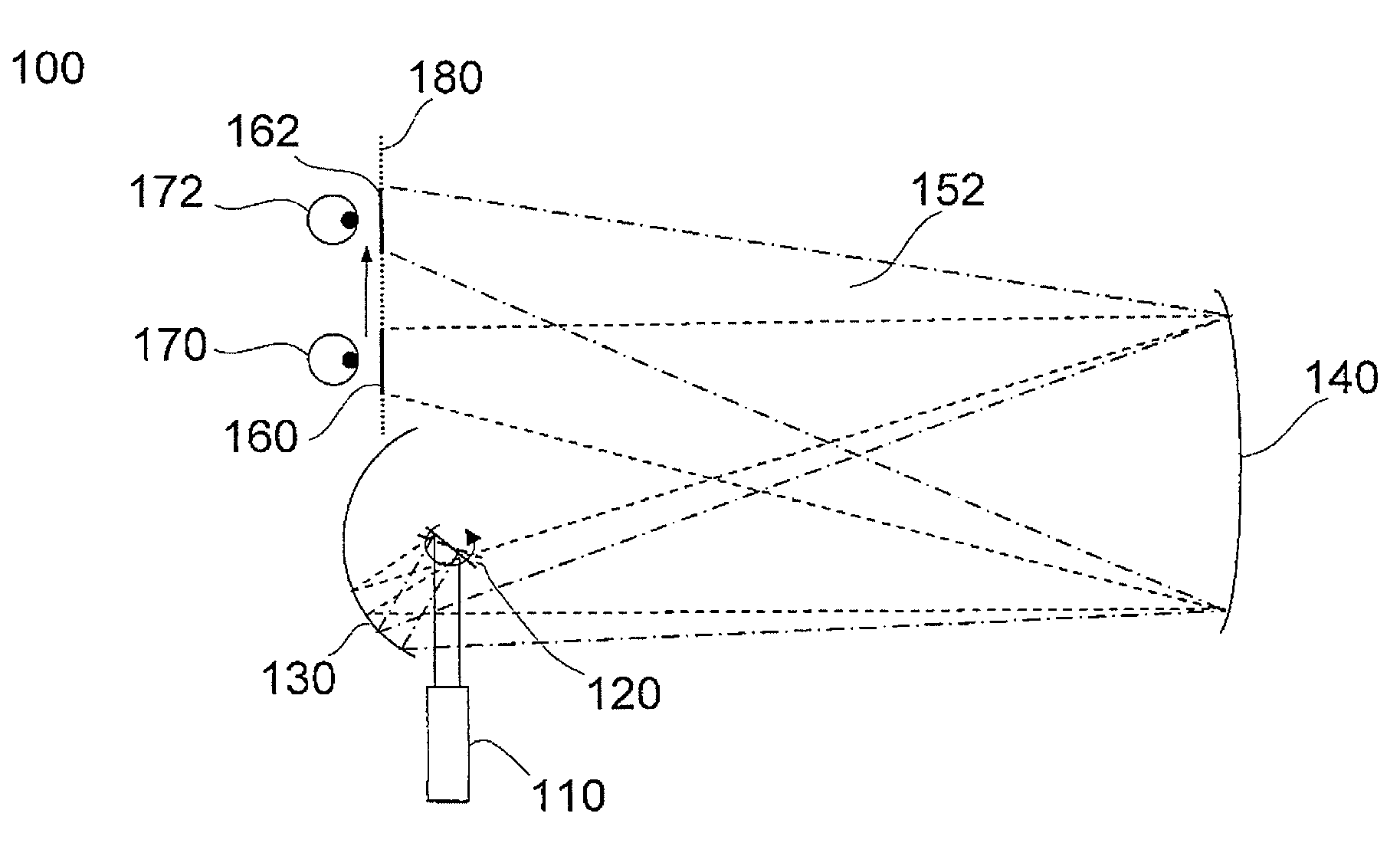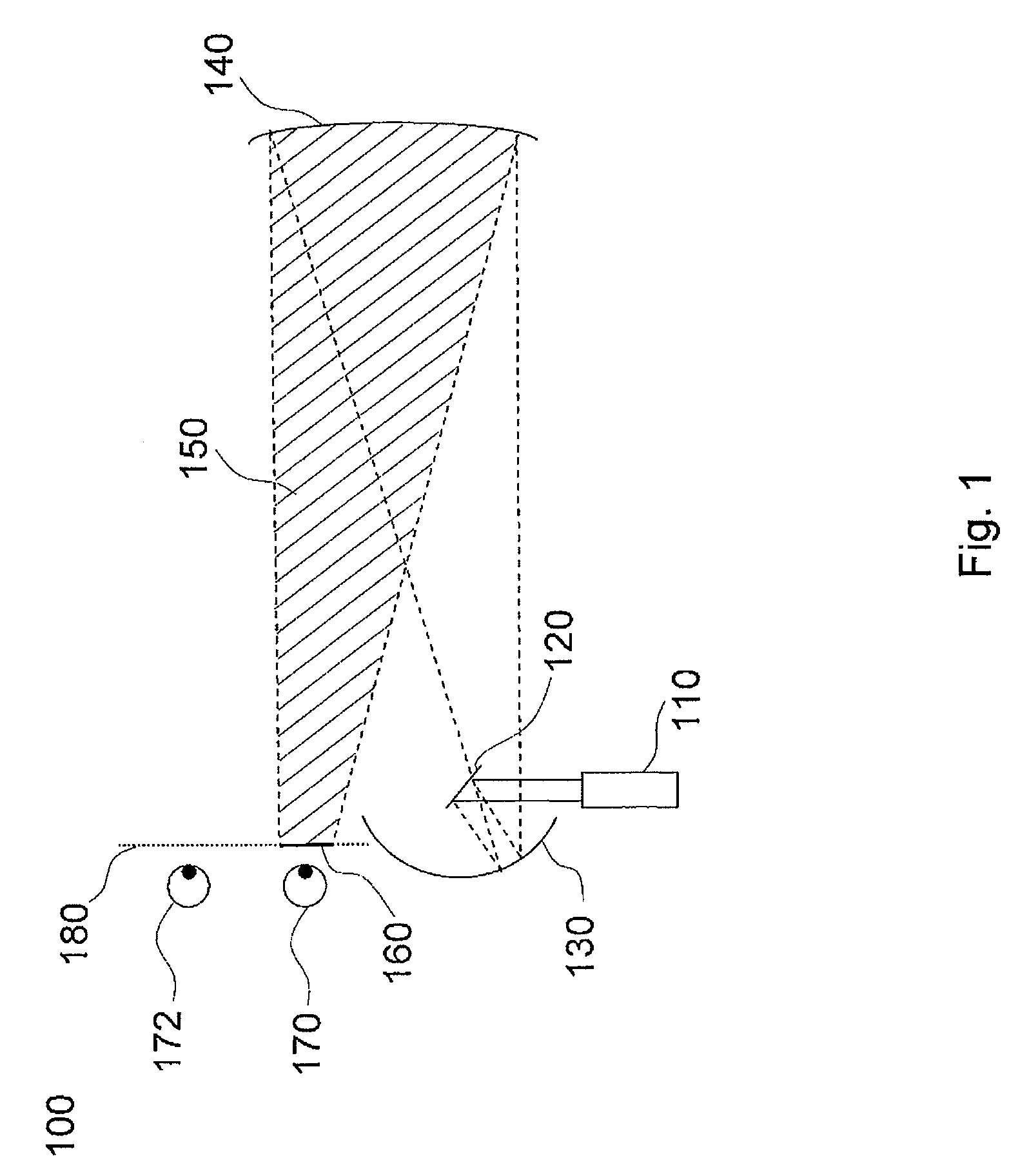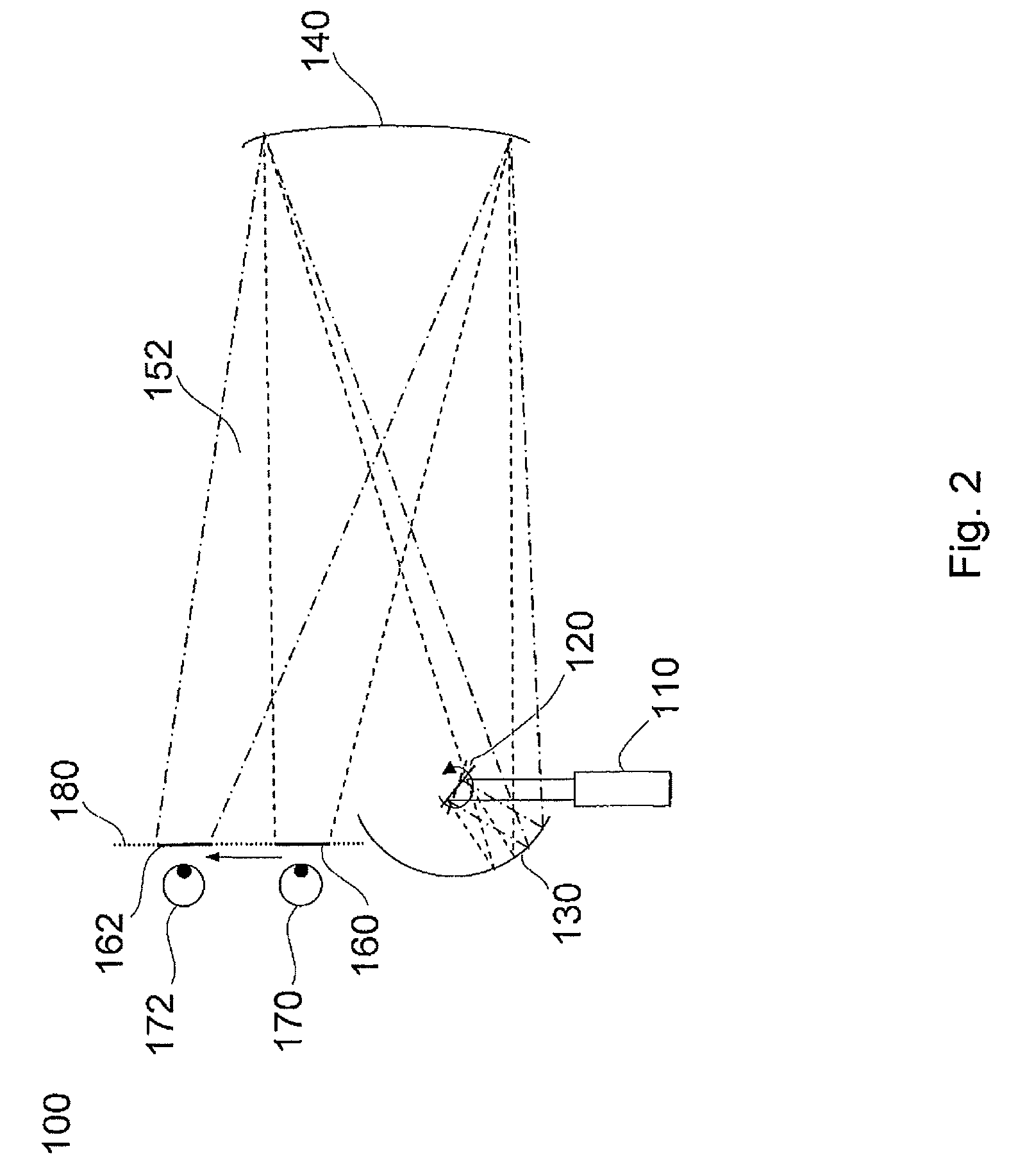Holographic reconstruction system and method with a sequence of visibility regions
a reconstruction system and visibility region technology, applied in the field of holographic reconstruction system, can solve the problems of disappearance of visibility, difficult to find the borders of the reconstruction volume for an observer, and difficulty in detecting the visibility of the three-dimensional reconstruction
- Summary
- Abstract
- Description
- Claims
- Application Information
AI Technical Summary
Benefits of technology
Problems solved by technology
Method used
Image
Examples
first embodiment
[0053]FIG. 4 is a simplified view of an inventive holographic reconstruction system 400 at a first point of time. The drawing shows light source means 410, 412, spatial light modulator means (SLM) 420, 422, a beam splitter 430, 432, a telecentric lens 440, 442, deflection means 450, 452, a projection lens 460, 462 and reflection means 470, 472. A display screen 480 is only provided once in the entire arrangement. Further, a visibility region 490, 492, and eye position 500, 502, a reconstruction volume 510, 512 and a visibility range 520, 522 are shown. Deflection control means for controlling the deflection means and light control means for generating light pulses are not explicitly shown in this drawing.
[0054]As can be seen in the drawing, the entire arrangement comprises two assemblies of analogous design. Each assembly generates the image for one eye. The following description relates to only one of those assemblies. A person skilled in the art can easily translate the principle...
second embodiment
[0070]FIG. 7 shows the general design of deflection means 700 according to this invention with an optically addressable spatial light modulator (OASLM) 712 with a diffractive structure and a deflection mirror 714, which is attached to the OASLM 712.
[0071]According to this embodiment, the OASLM 712 comprises a first glass plate 716 with a transparent electrode, an LC layer 718, which forms the diffractive structure of the OASLM 712 and which contains LC molecules, a transparent, photosensitive semiconductor layer 720, and a second glass plate 722 as the substrate. In this embodiment, the OASLM 712 is transparent for the light which is used for the reconstruction of the three-dimensional scene, so that this light can reach the deflection mirror 714 which is arranged behind.
third embodiment
[0072]FIG. 8 shows the general design of deflection means 800 according to this invention with an optically addressable spatial light modulator (OASLM) 812 with a diffractive structure, where a deflection mirror 814 in the form of a reflecting layer is integrated into the OASLM 812.
[0073]In this embodiment, the OASLM 812 again comprises a glass plate 816 with a transparent electrode, an LC layer 818, which forms the diffractive structure of the OASLM 13 and which contains LC molecules, a photosensitive semiconductor layer 820, and a glass plate 822 as the substrate. The deflection mirror 814 is integrated between the LC layer 818 and the semiconductor layer 820 in this embodiment.
[0074]Alternatively, it is possible that the OASLM 712, 812 exhibits a refractive structure or a combination of a diffractive and a refractive structure, so that also a refractive light modulation is possible on the OASLM with a refractive index variation.
[0075]It is further possible that the deflection mir...
PUM
 Login to View More
Login to View More Abstract
Description
Claims
Application Information
 Login to View More
Login to View More - R&D
- Intellectual Property
- Life Sciences
- Materials
- Tech Scout
- Unparalleled Data Quality
- Higher Quality Content
- 60% Fewer Hallucinations
Browse by: Latest US Patents, China's latest patents, Technical Efficacy Thesaurus, Application Domain, Technology Topic, Popular Technical Reports.
© 2025 PatSnap. All rights reserved.Legal|Privacy policy|Modern Slavery Act Transparency Statement|Sitemap|About US| Contact US: help@patsnap.com



